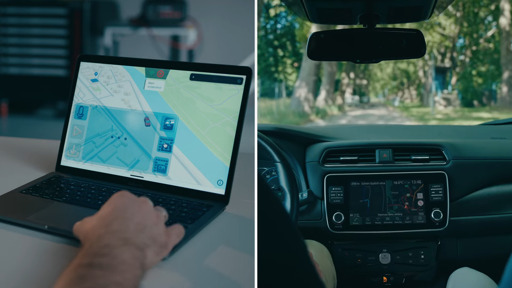Fairphone announces the €599 Fairphone 6, with a 6.31" 120Hz LTPO OLED display, a Snapdragon 7s Gen 3 chip, and enhanced modularity with 12 swappable parts
-
Did some digging, but it doesn't appear the band compatibility with US carriers is improved at all. Am I wrong here?
Would that be a problem when travelling to the... oh, right, we're not doing that anymore... would this be a problem for Europeans travelling to Canada?
-
Louis Rossman is a perfect example of someone who's angry all the time.
And an attack on his character is of zero relevance to the topic of Fairphone and jack ports.
-
e/os is still android, i think he means Linux, and other OSes !
 ️
️postmarketos has builds for the 4/5, and Fairphone has already submitted devicetree files for the 6 to the mainline Linux kernel:
https://lore.kernel.org/linux-pm/20250625-sm7635-fp6-initial-v1-12-d9cd322eac1b@fairphone.com/ -
No earphone jack again. That's a bit sad. Even though I mainly use BLT earbuds, I still sometimes wish I could use my wired headphones. It's just a small inconvenience
Honestly, I don't really get the people who complain about the lack of 3.5mm jack on a smartphone. If you're looking for quality you're more likely to get better quality out quality USB-C headphones than quality 3.5mm headphones due to the USB-C headphones picking up less noise and having its own DAC (which is probably better than the phone DAC that 3.5mm would use).
EDIT: I would've been surprised if this take wasn't controversial. But I guess it's a good example how the fediverse is not a leftist echo chamber. You have a loud minority complaining about not being able to use a century old technology that the vast majority in the mobile space has moved away from and any compromise on what you want is unacceptable. That's about as conservative as you can get.
-
And an attack on his character is of zero relevance to the topic of Fairphone and jack ports.
I would say having a headphone jack is better than not having one, but stop short of crying conspiracy. You would feel better if they didn't sell BT earbuds?
-
a vague promise
"Instead of a one-size-fits-all approach, we collaborate with suppliers to develop improvement plans that are informed by detailed assessments and worker surveys." p. 28
From their recently published annual(I think?) impact report. There's a bit more detail under section 4.3, not crazy specific but definitely better than a vague promise imo.
The single best thing for sustainability is long lifetime of the phone. Now that EU mandates it and Apple, Pixel and Samsung all offer 7 years of updates Fairphone's advantage here is slim. The rest are just vague promises. Apple also promises to support people and communities involved in its supply chain:
https://www.apple.com/supply-chain/
All the companies try to avoid sweatshops because it's terrible for PR but unless you are actually going to assemble the phone in EU you don't really know who made it. For me the difference between two phones made in China is not big enough to pay double. -
You can find adapters that can charge while still having a 3.5mm back
fast charging / USB-PD may not work, and 3.5mm media controls may not pass through properly
-
The to make matters worse, they’ve already stopped producing spare parts for the fairphone 4
What's this then?
In terms of fp4 replacement parts, I am only quoting a friend of mine, I haven't personally looked into that; though I was ready to believe it after my experience.
-
From their own site it would seem they don't. There is a "US" version but you can't buy a Fairphone from the website directly.
Rofl if they dump them on ebay as new from a third party US shipper.
-
What do you mean with stopped producing spare parts for FP4? They are still widely available
In terms of fp4 replacement parts, I am only quoting a friend of mine, I haven't personally looked into that; though I was ready to believe it after my experience.
-
Louis Rossman is a perfect example of someone who's angry all the time.
Is he wrong though?
-
couse the other guy said that the parts are not manufactured anymore
Parts being available doesn't necessarily mean they're being manufactured. It just means there is unsold stock.
-
What are you talking about? I exchanged multiple mails per day when I had a problem.
Also as others have mentioned, the parts are still available on their website.
In terms of fp4 replacement parts, I am only quoting a friend of mine, I haven't personally looked into that; though I was ready to believe it after my experience.
In terms of your good customer service experience... I mean, good? I'm glad your experience was better than mine? Mine has been the worst customer experience I've ever had with a company and I genuinely went in to this with a high opinion of them.
I don't know what more to add here, we had different experiences, I'm sharing mine... You're sharing yours? Different things are different to each other...
Your experience being different to mine doesn't prove my experience never happened.
-
The to make matters worse, they’ve already stopped producing spare parts for the fairphone 4
Your comment made me laugh! There’s no need to criticize the company if you’re having a bad day or don’t like it. It only takes a minute to check their website for spare parts. Most likely, it’s your local shop that’s out of stock, not Fairphone itself.
Spare parts for your Fairphone, discover them here
Yes, you can repair the Fairphone yourself by ordering spare parts (modules) directly in our shop.
Fairphone (shop.fairphone.com)
In terms of fp4 replacement parts, I am only quoting a friend of mine, I haven't personally looked into that; though I was ready to believe it after my experience.
-
i mean the bezels together are less than 1cm. and the notch takes space from notifications, with two sim cards and a vpn active that shit overflows instantly anyway.
Fair, I suppose it depends on how the software handles it too. Personally I never let notifications stack up and the VPN for me is on the other side. I'd personally rather have the shorter phone and a cutout.
-
Louis Rossman is a perfect example of someone who's angry all the time.
Is he wrong though?
-
Fair, I suppose it depends on how the software handles it too. Personally I never let notifications stack up and the VPN for me is on the other side. I'd personally rather have the shorter phone and a cutout.
vpn is on the right, yeah. but this is with just one sim:

with two i get another signal strength and wifi calling symbol. it's already collapsing them when not on the quick setting screen, which is very frustrating.
-
Is he wrong though?
No.
Two identical replies from two different accounts at the same time makes me think I'm responding to a bot, tho.
-
Very strange how mine can somehow fit a 7000mAh battery, dual SIM + SD card slot and a regular jack. Hmm...
Is it repairable only with a screwdriver and parts you can buy from the manufacturer?
-
No earphone jack again. That's a bit sad. Even though I mainly use BLT earbuds, I still sometimes wish I could use my wired headphones. It's just a small inconvenience
Probably not a popular thing to say on here, but I think you’ve lost the battle for the earphone jack. It probably just requires way too much real estate to be practical on a modern day cell phone.







